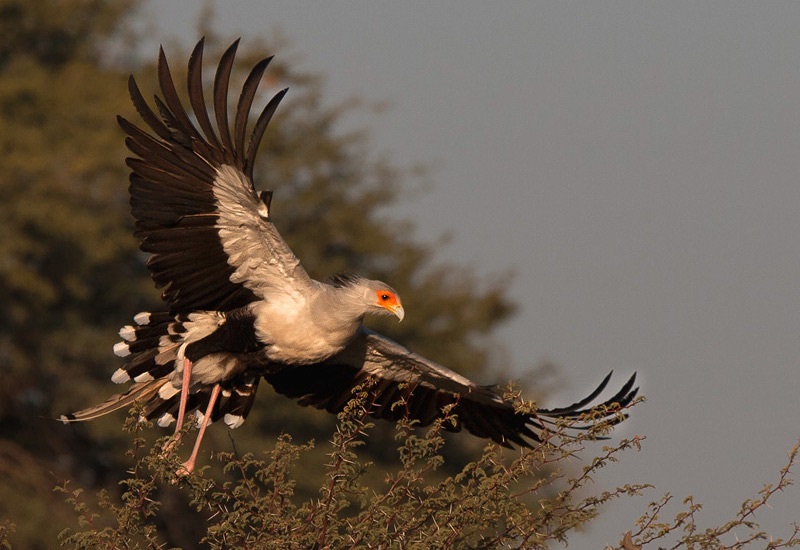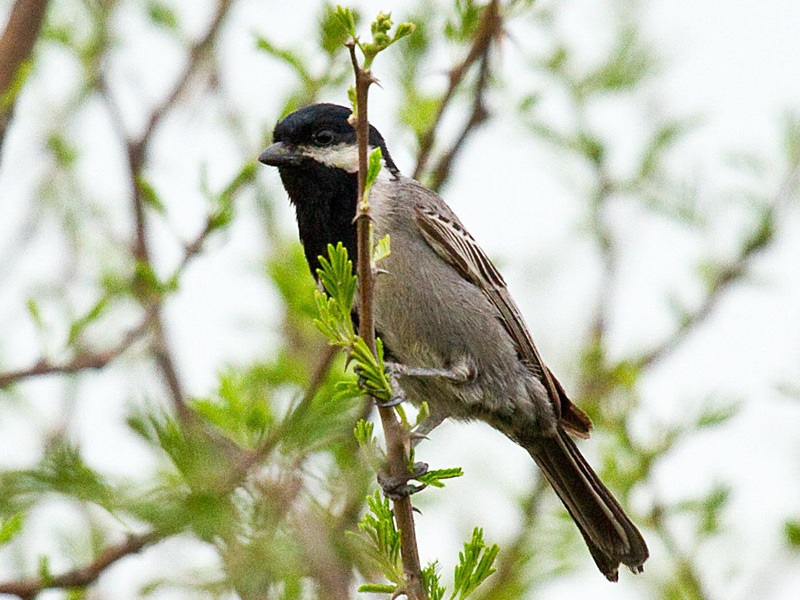The North-West province is one of the less known birding areas of Southern Africa. However, it does not imply that there isn’t any birding to be done. The North-West is probably one of the more accessible arid areas to bird in Southern Africa. This gives birders the unique opportunity to see many of the near-endemic species of Southern Africa.
These include: Pale Chanting Goshawk, Northern Black Korhaan, White-backed Mousebird (the family is endemic to Africa south of the Sahara), Southern Yellow-billed Hornbill, Crimson-breasted Shrike, Acacia Pied Barbet, Kalahari Scrub-Robin, Southern Pied Babbler, Orange River White-eye, Marico Flycatcher, Black-faced Waxbill, Red-headed Finch, Shaft-tailed Whydah, Barred Wren-warbler, Black-chested Prinia and a host of larks including Eastern Clapper-, Fawn-coloured- and Spike-heeled Larks.

Much of the birding in the province is centered on the Game Reserves and Parks around the province. The best known of these parks is Pilanesberg Game Reserve. This park boasts a number of regional and national species. Southern Pied Babbler, Crimson-breasted Shrike, Pale Chanting Goshawk, Secretarybird and Kalahari Scrub-Robin are a few examples of the former and Cape Vulture and White-backed Heron examples of the latter. Pilanesberg is also classified as an IBA [Important Bird Area]. Other IBA’s in the region include Kgaswane Mountain Reserve, Barberspan Nature Reserve, Sandveld Nature Reserve and Bloemhof Nature Reserve.

Pilanesberg Nature Reserve is within easy reach of Johannesburg. It is approximately two hours by car from the Johannesburg International Airport. The other reserves are also easy accessible via a good maintained road system. The going does get a little more isolated if one is chasing some of the more uncommon specials of the province. An excellent example of this is the Yellow-throated Sandgrouse that is found in the Northam-Thabazimbi area.
This area of Southern Africa is a worthwhile extension to any trip to Southern Africa. When visiting this exciting area, be on a special look-out for the Yellow-throated Sandgrouse, Short-clawed Lark, Southern Pied Babbler, Crimson-breasted Shrike, Barred Wren-warbler, Short-toed Rock-Thrush, Kalahari Scrub-Robin, Orange River Francolin, Pink-billed Lark and Olive-tree Warbler as these make up the top 10 birds of the province.

Sandgrouse Route
The North West area of South Africa offers the unique opportunity to see four of the ten African Pterocles (Sandgrouse) species. These are the Yellow-throated Sandgrouse, the largest of the African sandgrouse, Burchell’s, Namaqua and Double-banded Sandgrouse.
The Sandgrouse Route is a 5 day trip, starting in Johannesburg, which visits some of the prime spots for these species; while exploring some of the more remote and untouched birding areas in South Africa.

Although the four sandgrouse species form the flagship of this stunning foray into the North West of South Africa, there are a number of other important and sought after species to be seen on the route. Some of the other notables of the route’s bird list include Short-clawed Lark and Burchell’s Courser. The Short-clawed Lark is an endemic species to South Africa with a very limited range. The Sandgrouse Route transgresses the primary distribution range of this species. Burchell’s Courser is an uncommon, nomadic endemic to South Africa with an aura all of its own.

Other species of note include Southern Pied Babbler, Crimson-breasted Shrike, Barred Wren-warbler, Kalahari Scrub-Robin, White-Backed Mousebird, Acacia Pied Barbet, Eastern Clapper Lark, Fawn-coloured Lark, Ashy Tit, Cape Penduline-Tit, Black-faced Waxbill (all Near Endemics to South Africa), Swallow-tailed Bee-eater, Pririt Batis, Rufous-eared Warbler and Chat Flycatcher.
Text Source: Fatbirder
Photo Source: Birding Ecotours
Map Source: Google Maps
